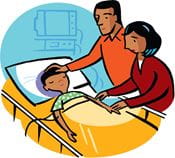- Find a Doctor
-
For Parents
- Before Your Visit
- During Your Visit
- After Your Visit
- More Resources for Parents
Patient & Visitor Resources -
Services
- Locations
-
About Us
- About Childrens
- Find it Fast
- Additional Resources
Find it FastAdditional Resources - MyCHP
ALERT:
There is construction in and around UPMC Children’s Hospital that is affecting the traffic flow – please allow for extra time traveling into the hospital.
- Find a Doctor
- For Parents
-
Services
-
Frequently Searched Services
- Asthma Center
- Brain Care Institute (Neurology & Neurosurgery)
- Cancer
- UPMC Children's Express Care
- Ear, Nose, & Throat (ENT)
- Emergency Medicine
- Endocrinology
- Gastroenterology
- Heart Institute
- Genetic & Genomic Medicine
- Infectious Diseases
- Nephrology
- Newborn Medicine
- Primary Care
- Pulmonary Medicine
- Rheumatology
- Surgery
- Transplant Programs
- See All Services
-
Frequently Searched Services
- Locations
- About Us
- MyCHP
- I Want To
- More Links









 At UPMC Children’s Hospital of Pittsburgh, we believe parents and guardians can contribute to the success of this test and we invite you to participate. Please read the following information to learn about the surgery and how you can help.
At UPMC Children’s Hospital of Pittsburgh, we believe parents and guardians can contribute to the success of this test and we invite you to participate. Please read the following information to learn about the surgery and how you can help. Once your child has been registered for the surgery, a nurse, nurse practitioner or physician’s assistant and a member of the anesthesia staff will meet with you to take your child’s vital signs, weight and medical history. As the parent or legal guardian, you will be asked to sign a consent form before the anesthesia is given.
Once your child has been registered for the surgery, a nurse, nurse practitioner or physician’s assistant and a member of the anesthesia staff will meet with you to take your child’s vital signs, weight and medical history. As the parent or legal guardian, you will be asked to sign a consent form before the anesthesia is given. When your child is moved to the recovery room, you will be called so that you can be there as he wakes up.
When your child is moved to the recovery room, you will be called so that you can be there as he wakes up.